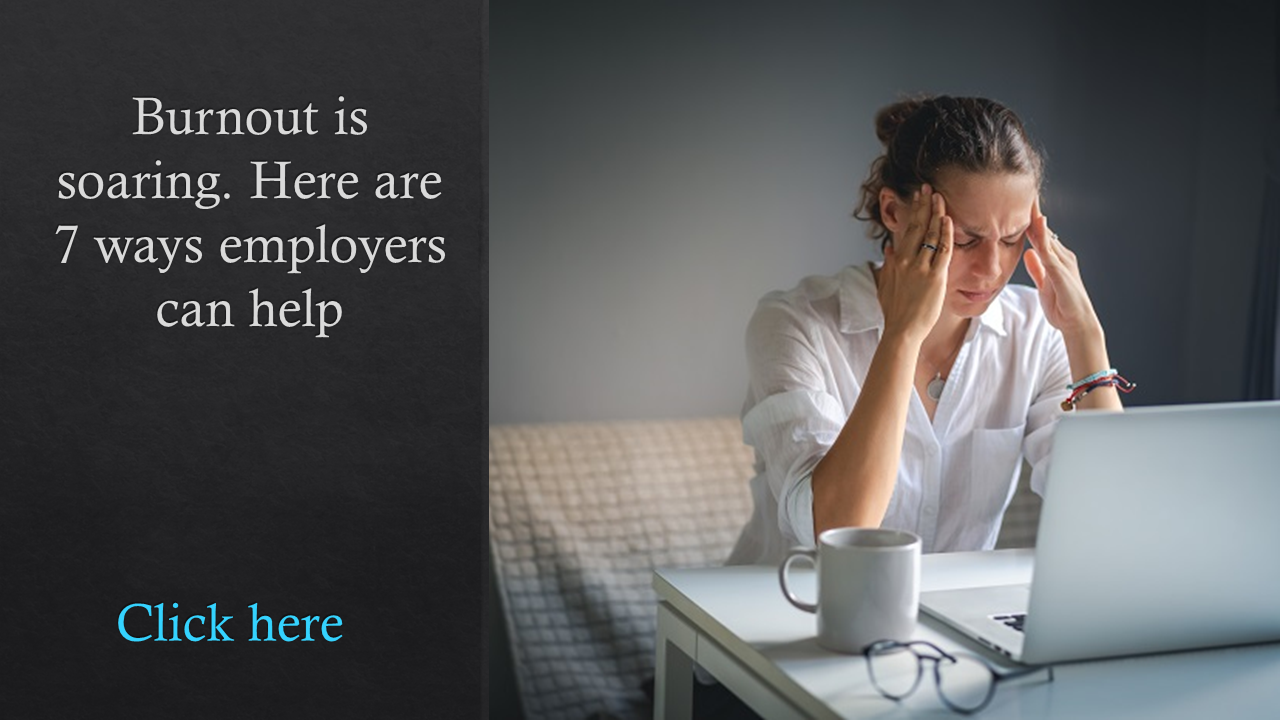After nearly two years of the ongoing pandemic, employee stress and mental health issues are on the rise. Now comes another complication for many workers: stress surrounding end-of-year and holiday planning.
“The holidays are one of the busiest and most expensive times of the year for most employees,” says Leslie Tarnacki, senior vice president of human resources at WorkForce Software. “The additional tasks, both at work and at home, as well as added expenses, can bring increased stress and mental health issues.”
In addition to financial pressures—think gift giving and preparing for special gatherings, which can hit employees in the pocketbook—a shift in normal routines with additional obligations and gatherings and a loss of time can be stressful. Plus, many employees often work longer hours and have a variety of additional tasks to complete, Tarnacki explains.
“During the holidays, many employees are wrapping up year-end plans, developing new ones or stepping up to help manage heightened seasonal operations,” she says. “The increase in responsibilities in addition to everyday work ultimately increases stress levels.”
So, what does this mean for employers, especially in an already arduous year? How can they help? For answers, HRE spoke to Tarnacki.
HRE: Have you noticed increased anxiety among employees during this time of year? What are you doing to help your employees right now, and what kind of impact is it making?
Leslie Tarnacki, WorkForce Software
Tarnacki: Self-care is often lost at this time of year to things like decorating, accommodating family and friends, shopping for gifts and celebrating in general, regardless of what holiday one may celebrate. But self-care is more important than ever when stress levels are potentially rising. Doing things as simple as eating well prove to be even tougher this time of year. This year, it all seems exacerbated as we’re dealing with ongoing COVID fatigue and the uncertainty of what exactly we may face in the coming year.
By offering stress management training and support and ensuring mental health support is front and center, it creates a resilient environment at work to help employees with resilience in their work/life balance. Maintaining healthy boundaries, dealing with family conflicts, learning how to de-escalate conflict and knowing how to keep emotional responses in check are valuable tools that will help employees not just during the holiday season.
HRE: Is holiday stress taking on new significance for employees during the ongoing pandemic?
Tarnacki: The pandemic brought many additional stresses into the workplace, such as fatigue, difficulty with juggling our work and personal lives, and lack of motivation. However, the pandemic also forced many leadership teams to pivot and make mental health and stress management a priority at work. Now that more and more companies are adopting mental health policies and beginning to offer resources to help employees manage stress, companies will be looking for ways to minimize holiday stress in particular, conduct more regular check-ins year-round, and increase awareness and communications surrounding the resources available for workers who are interested in guidance and help with managing stress.
Related: Inside Hootsuite’s COVID-driven mental health strategy
HRE: Why is it important that employers step up to address mental health?
 Tarnacki: Right now, our role as HR and business leaders is to do everything we can to make sure our employees are satisfied and know that they are appreciated and cared about. Employees want to feel heard and supported in their work environment, especially when they are navigating a busy period at work. If companies do not care about their employees’ needs, they run the risk of high turnover and will not remain competitive against other employers. It’s a business imperative in today’s increasingly competitive landscape to provide a psychologically safe and supportive work environment for employees.
Tarnacki: Right now, our role as HR and business leaders is to do everything we can to make sure our employees are satisfied and know that they are appreciated and cared about. Employees want to feel heard and supported in their work environment, especially when they are navigating a busy period at work. If companies do not care about their employees’ needs, they run the risk of high turnover and will not remain competitive against other employers. It’s a business imperative in today’s increasingly competitive landscape to provide a psychologically safe and supportive work environment for employees.
Related: What ADP Research indicates is fueling the Great Resignation
HRE: What should company and HR leaders do to help?
Tarnacki: Company leaders should first and foremost curtail unnecessary stresses—now more than ever. By implementing modern workforce management systems and offering mental and physical health resources, businesses can help make sure employees aren’t working too many hours of overtime, foster a culture that makes staff feel supported and appreciated, make a true difference in the workplace experience and retain top talent.
HRE: What can tech accomplish?
Tarnacki: It can play a significant role in supporting employees’ wellbeing and work/life balance. For instance, fatigue management systems monitor hours worked, tasks performed, breaks taken and time off scheduled in order to flag any staff that may be at risk of becoming fatigued and burned out. Other systems provide pulse check and in-the-moment notifications to help managers stay informed on potential worker wellness issues, specifically when employees are working overtime. Time and attendance systems are also being used to support staff wellbeing by paying out incentives like a bonus or a free lunch to workers who come in to work seven days in a row, or by supporting time-off balance donations to co-workers who need to take a break or time off to recover from COVID-19 or other illnesses and/or care for family that may need support healing.
 HRE: What about helping to enforce a better work/life balance? Of course that’s important not just for the holiday season, but generally speaking, especially as lines blur with remote work.
HRE: What about helping to enforce a better work/life balance? Of course that’s important not just for the holiday season, but generally speaking, especially as lines blur with remote work.
Tarnacki: In the new world of work, allowing for a flexible schedule is essential—especially for people simultaneously juggling work, childcare or supporting other family members. Company leaders need to realize that the traditional 9-5 no longer exists due to the flexibility of remote work and that employees can be very productive no matter their location.
And encouraging employees to log off and unplug at the end of every workday has become a very important step in creating a positive culture—even during a busy period at work—as it allows employees to come back the next day more refreshed and productive, leading to higher levels of employee satisfaction and engagement as well as better business outcomes.
Finally, organizations need to do everything they can to support their employees, and that includes offering benefits that truly make a difference. Offering stress management courses and peer support groups will provide employees with the resources they need when going through a busy time at work and will show employees that the company cares about their wellbeing—further increasing their productivity and positivity in the workplace.